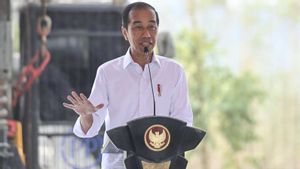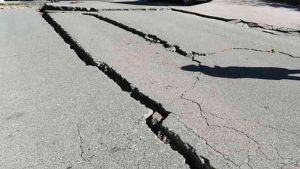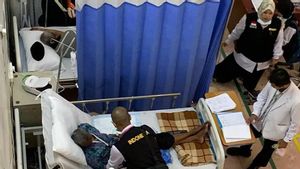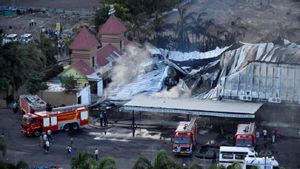DIY - The Regional Disaster Management Agency (BPBD) revealed that of the 438 villages in the Special Region of Yogyakarta (DIY), as many as 301 villages were in disaster-prone zones.
Head of the DIY BPBD Emergency Handling Division Lilik Andi Aryanto asked people living in disaster-prone zones in DIY to increase preparedness to enter the transition period.
"Hopefully, when a disaster occurs, residents in these villages can handle it independently," he said in Yogyakarta, Thursday, November 2, which was confiscated by Antara.
Lilik said that extreme weather such as heavy rain accompanied by lightning and strong winds has the potential to occur during the transition period from the dry season to the rainy season.
Thus, a number of potential disasters due to the impact of extreme weather need to be anticipated by all residents in DIY, especially those living in 301 villages.
"We ask that preparedness be increased starting from cutting trees that are thick, checking roofs of houses, especially those made of zinc, and ensuring that ditches or irrigation canals are not clogged," said Lilik.
According to him, 301 disaster-prone villages were spread across Bantul, Kulon Progo, Sleman, Gunungkidul, and Yogyakarta districts with potential disaster vulnerabilities including tsunamis, earthquakes, floods, landslides, tornadoes, and eruptions of Mount Merapi.
관련 항목:
Lilik said hundreds of villages in the disaster-prone zone had become disaster-resilient villages, so their citizens had received education and understanding of disaster risk reduction.
Until 2023, according to him, 332 disaster-resilient villages have been formed in DIY.
"In this disaster-resilient village, we have also provided tools such as angkong, saw, and other equipment so that if there are small-scale incidents, hopefully they can be completed at the village level," he said.
Head of the Yogyakarta BMKG Climatology Station, Reni Kraningtyas, said that currently DIY has entered a transition period or a transition from the dry season to the rain.
The start of the rainy season in DIY, he said, is predicted to be based on the first ten days of November 2023 starting from the northern Kulon Progo Regency.
According to Reni, the start of the rainy season in DIY this year experienced a decline of two to three basics compared to the 30 year rainy season from 1991 to 2020.
"The peak of the rainy season in DIY is predicted to occur in February 2024," he said.
The English, Chinese, Japanese, Arabic, and French versions are automatically generated by the AI. So there may still be inaccuracies in translating, please always see Indonesian as our main language. (system supported by DigitalSiber.id)

















